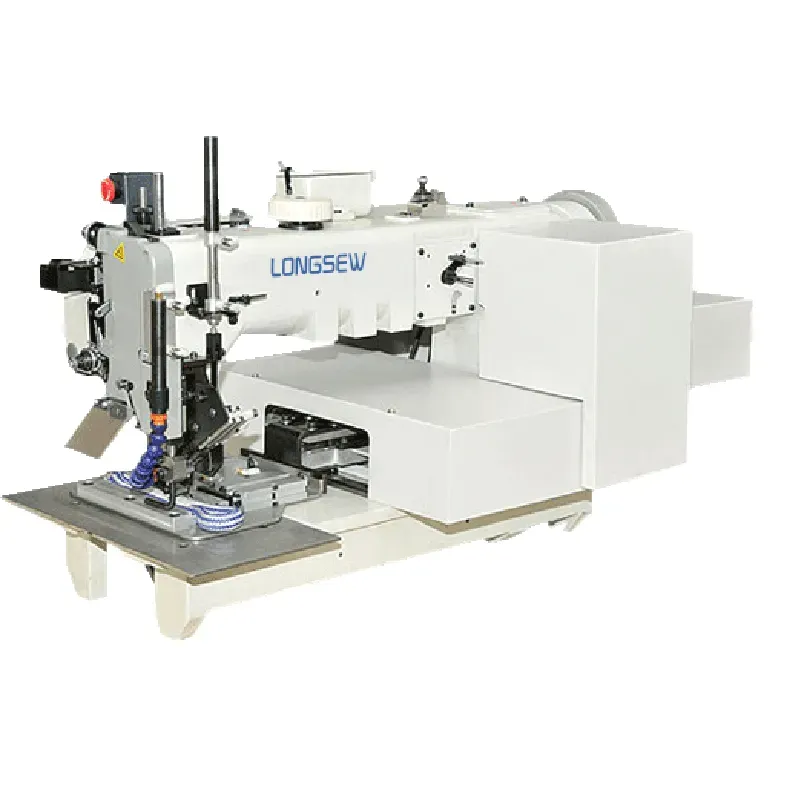Understanding the Distinctions Between Overlock and Coverstitch Sewing Machines
The Difference Between Overlock and Coverstitch A Comprehensive Guide
When it comes to sewing, whether you're a professional tailor or a DIY enthusiast, understanding the different types of stitches and sewing machines available is essential. Two popular techniques that often come up in discussions are overlock and coverstitch. While they may seem similar at first glance, they serve distinct purposes and offer unique features that can greatly enhance the quality and durability of your projects. This article delves into the differences between overlock and coverstitch, helping you determine which method is best suited for your sewing needs.
What is Overlocking?
Overlocking, performed by an overlock machine, is primarily used for finishing the edges of fabric to prevent fraying. It involves a series of threads—usually two to five—that create a stitch around the fabric edges. The key function of an overlocker is to cut the fabric while it stitches simultaneously, resulting in a clean and professional finish. Overlock stitches are stretchy and can accommodate the natural movement of the fabric, making them ideal for knit and stretch fabrics.
The most common types of overlock stitches include the three-thread and four-thread stitches. The three-thread stitch is perfect for lightweight fabrics, while the four-thread stitch offers more durability, making it suitable for heavier materials. One of the notable features of overlock machines is their ability to sew seam allowances and finish edges in one step, significantly speeding up the sewing process.
What is Coverstitch?
Coverstitch, on the other hand, is typically associated with sewing hems and decorative stitches. A coverstitch machine produces a stitch that looks similar to a serged edge but differs in functionality. The coverstitch has two or three needle threads on the top and a looper thread on the underside, creating a chain-like appearance. This stitch allows for a high degree of stretch, which is particularly useful for sewing hems on knit fabrics.
Coverstitching is the go-to method for achieving professional-looking hems on T-shirts, leggings, and other stretch garments. The resulting hem is flat, which is comfortable against the skin and reduces bulk. This type of stitching is excellent for applications where both appearance and functionality are crucial.
what is the difference between overlock and coverstitch

Key Differences Between Overlock and Coverstitch
1. Functionality - Overlock machines are primarily used for finishing raw edges and sewing seams. They are especially beneficial for preventing fraying and ensuring durability. - Coverstitch machines are designed mainly for creating hems and decorative sewing on the fabric surface. They allow for a clean finish that maintains the fabric's stretch.
2. Stitches - Overlock stitches provide a more secure joining of fabric layers while finishing edges. They can accommodate various stitch configurations—like three or four threads—for different fabric weights. - Coverstitching results in a flat stitch that is visually appealing on the outside while offering stretch. However, it does not trim the fabric edges.
3. Machine Structure - Overlock machines are equipped with a cutting blade and have settings for different stitch types, allowing for versatility in finishing and sewing seams. - Coverstitch machines typically have a simpler mechanism focused on creating the flatlock stitch, with less emphasis on cutting the fabric.
4. Applications - Overlock is indispensable when sewing garments that require a clean seam finish, such as casual wear and items made from woven or stretchy materials. - Coverstitch is often reserved for professional hems in activewear, undergarments, and T-shirts, ensuring that the garment remains comfortable and maintains its shape.
Conclusion
Understanding the differences between overlock and coverstitch machines is vital for achieving high-quality sewing results. While overlock machines are essential for seam finishing and preventing fraying, coverstitch machines excel in creating durable, aesthetically pleasing hems on stretchy fabrics. Depending on the projects you undertake, incorporating both machines into your sewing arsenal can elevate the quality of your creations, ensuring they are both beautiful and functional. As you continue to explore the world of sewing, knowing when to use each technique will undoubtedly enhance your skills and the end results of your efforts.
-
Industrial Cylinder Arm Sewing Machine: Revolutionizing Heavy-Duty SewingNewsJul.28,2025
-
Cylinder Arm Sewing Machine: Perfect for Special Sewing ApplicationsNewsJul.28,2025
-
Cylinder Bed Sewing Machine: Essential for Sewing Complex MaterialsNewsJul.28,2025
-
Heavy Duty Sewing Machine: The Essential Tool for Industrial ApplicationsNewsJul.28,2025
-
Computerized Pattern Sewing Machine: Revolutionizing Precision StitchingNewsJul.28,2025
-
Heavy Duty Industrial Sewing Machine: Power Meets PrecisionNewsJul.28,2025
-
Leather Sewing Machine: The Industrial Standard for Tough MaterialsNewsJul.18,2025





























